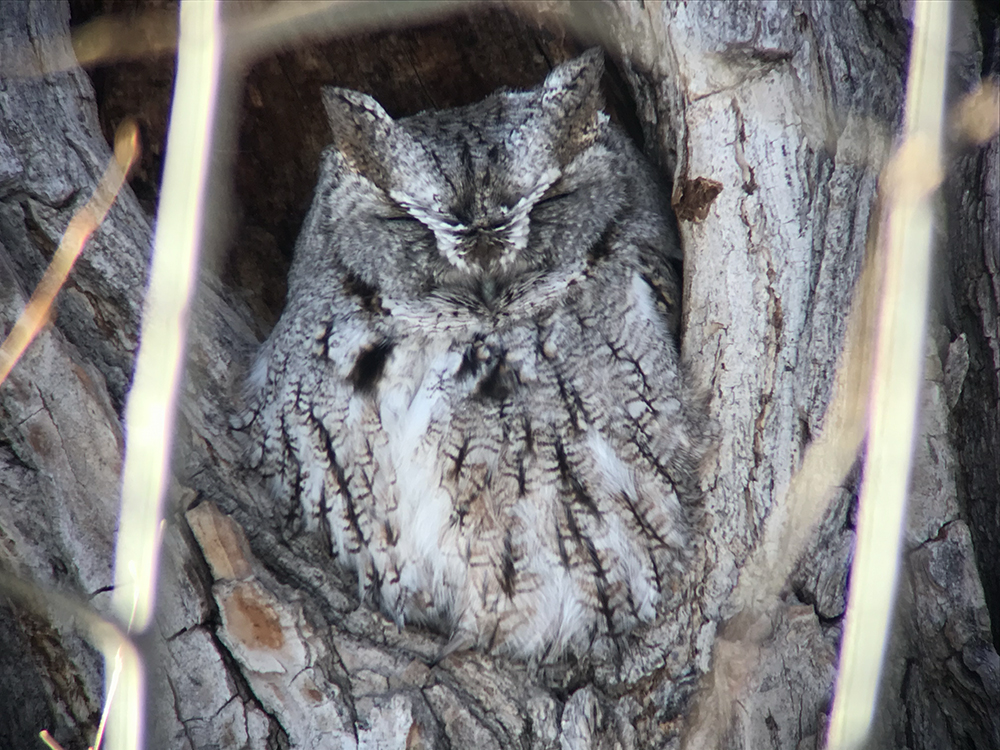
DSE Postdoc, Dr. Kristin Davis, publishes new research on the Eastern screech-owl in an understudied portion of its range
Kristin Davis, a postdoctoral researcher on our team, is lead author of a new paper that found Eastern screech-owls are responding to their environment in the Fort Collins, Colorado area in unexpected ways. The paper was recently published online in The Wilson Journal of Ornithology. Screech-owls are small, adorable (we’re biased!) birds that are relatively common in Eastern North America, but are understudied by scientists in the northwest portion of their range (where Fort Collins is located).

The paper includes part of Kristin’s research for her dissertation. She analyzed nearly a decade of data (spanning from 2013-2021) that was collected by community volunteers as part of an ongoing participatory science program that is spearheaded by Rob Sparks at the Bird Conservancy of the Rockies. Kristin used a dynamic occupancy model to explore what components of the environment (e.g., tree cover, climate) were associated with the likelihood of screech-owls persisting in and colonizing riparian habitat along the major river through town.
Kristin found that screech-owls were more likely to colonize riparian areas (the land along the edge of the river) with more aggregated tree cover, but less likely to persist in such areas over time. These results were surprising because screech-owls rely on trees for nesting and as perches for resting and to hunt from. In addition, the likelihood of the owl colonizing and persisting in the riparian zone across breeding seasons was influenced in complex ways by both previous winter precipitation and temperature conditions. These findings are especially relevant for habitat management in the northwestern portion of the owl’s range. Here, the environment is drier than in areas where the owl has more commonly been studied, such as deciduous forests in the north- and southeastern US.

This research is part of a collaboration between Bird Conservancy and the City of Fort Collins Natural Areas Department, and Kristin and her co-authors hope the findings will support local habitat management for the species. The city uses the Eastern screech-owl as an indicator species for riparian forest health, which makes these insights critical for stewardship efforts.
“This project reflects the power of cross-sector partnerships,” said Kristin. “It's been deeply meaningful to contribute to a research effort rooted in my own community, alongside people who care as much about this place as I do. I hope our work not only supports conservation efforts here in Fort Collins, but also underscores the importance of studying and supporting common species before they, too, become rare.”

